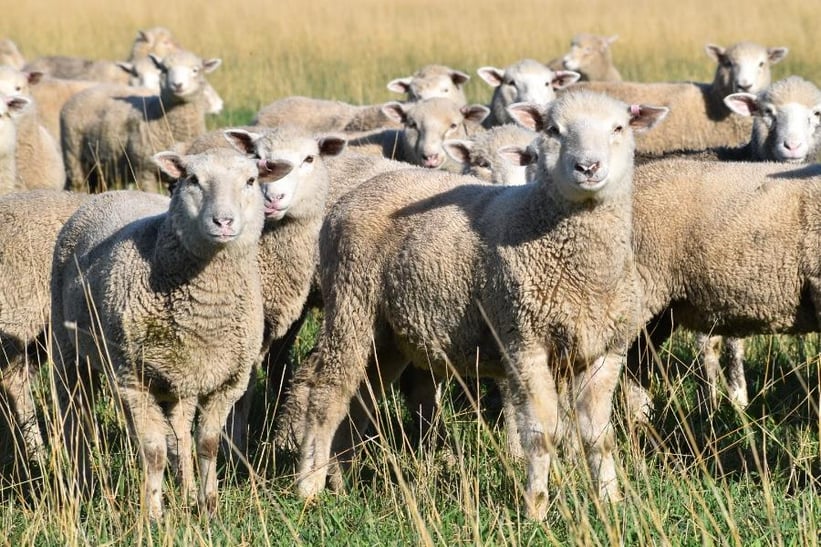 The hurdles we need to overcome to get lamb off the shelf and into shopping baskets appear never-ending, however a global food expert has some sage advice for Australian producers.
The hurdles we need to overcome to get lamb off the shelf and into shopping baskets appear never-ending, however a global food expert has some sage advice for Australian producers.
Presenting to the Lambro Future Directions Field Day at Holbrook last week, UK-based Dr David Hughes covered the driving forces impacting consumer buying habits, and the interrelationships between the global economic climate and the demand for premium meat products.
Unsurprisingly, one of the major drivers impacting consumer trends right now is the cost of living crisis.
“Coming out of this whole thing about the so-called cost of living pressure is that consumers are giving up some of the premium elements,” Dr Hughes said.
“People are conscious of prices and they're trying to buy the food they need at low prices, so it's about value.
“But they're also interested in your values, what you stand for.”
In particular, Dr Hughes said young consumers are demanding the best price, while also considering how a product is produced and ‘what sort of company you are’.
“They want affordable health for themselves and their family… and they also want transparency, traceability, authenticity, sustainability in the supply chains - they're genuinely interested in this.”
As it stands, lamb being an ‘uber-premium product’ means there is a reduced number of consumers who are still happy and willing to pay a premium price.
"I'm very loyal to lamb but the fact of the matter is, if I look at my own market, the demographic profile of the lamb consumer in the UK is older and richer,” Dr Hughes said.
“What worries me is every time I see a hearse go by, I think 'oops, there goes another lamb consumer'.”
Changing buying habits
A generational shift also means not only are consumers changing why they buy a product, but increasingly how they purchase it.
Online shopping is having a huge impact, with ‘Gen Z’ demanding the ability to shop on their phones.
This changed shopping perspective means they're more likely to repeat what they bought last time, and less likely to browse, Dr Hughes said.
“That's challenging for us if we're trying to make a big statement about our product.
“What it means is that we lack theatre… and I like theatre, particularly for meat.”
Dr Hughes also highlighted the downfall in the way we display meat.
That is, “in great big chunks and plastic packs stuck on a shelf”.
“We need to be better than that. Younger consumers are looking for meal solutions, but we give them meal problems by just putting great lumps of red meat out on the shelf,” he said.
“Chicken is much better than traditional meats in converting meal problems into meal solutions.”
Population growth and fertility decline
From a global perspective, a growing population will bring some opportunity, but steep declines in the fertility rate of countries could bring about changing demand.
“We've got close to 8 billion people in our world and we're going to add, give or take, another 2 billion by 2050,” Dr Hughes said.
“Of those extra 2 billion, 1.5 billion of those will either be Hindu or Muslim.”
So, what does that mean for Australian lamb producers?
“The more Muslim population, the better it is for you because Muslims are just great consumers of lamb.
“The Hindus on the other hand are more likely to be vegetarian.”
Most of this population growth will occur across Africa and some of Asia, while a decline is likely across the UK, Japan, Thailand and South Korea.
Food security and environmental credentials
As the world grapples with the prospect of more people, the impacts of war and pandemics, and a changing climate, the conversation has increasingly turned towards food security.
Dr Hughes said questions commonly posed include 'are we producing enough food; should we be producing more; should we be restricting imports; should we be more self-sufficient'?
“And what's more, there's a food security issue too at the individual household level,” he said.
Increasingly, Dr Hughes said this will boil down to sustainability and climate change.
“If we leap forward 10 to 15 years, I believe the livestock industries of the world are conscious of their responsibilities that they have to be more environmentally friendly,” he said.
“The livestock industry will change, and change categorically, and their footprint in terms of carbon and nitrogen will be much less than it is now.
“That will take huge pressure off the global industry, whether it be lamb, beef or whatever, but particularly lamb, beef and dairy, where we will see it will be part of the solution, not part of the problem.”
Increasing social pressures
At the end of the day, all of this adds up to producers facing increased social pressures that dictate consumers’ food choices, but there is still room to celebrate and consolidate lamb’s premium position in the meat market.
“Most consumers have got an idyllic view of farming and food production and want to know what the animals are eating, where their food comes from, who are the producers,” Dr Hughes said.
“You, the producers, are the heroes and who do consumers trust most when thinking about food?
“I don’t know what it’s like for Australia, but I can guess. In Europe, including the UK, farmers are the most trusted in the food system, and I think that gives you some genuine leverage that your food products should be sold with you in mind.
“You are part of that premium for your product.”
 Results
Results-3.png)
